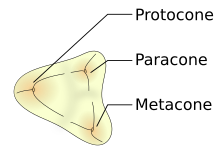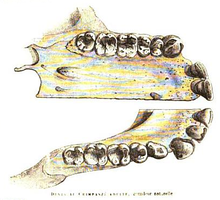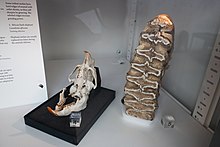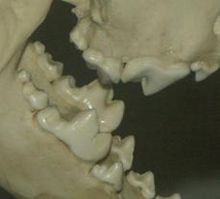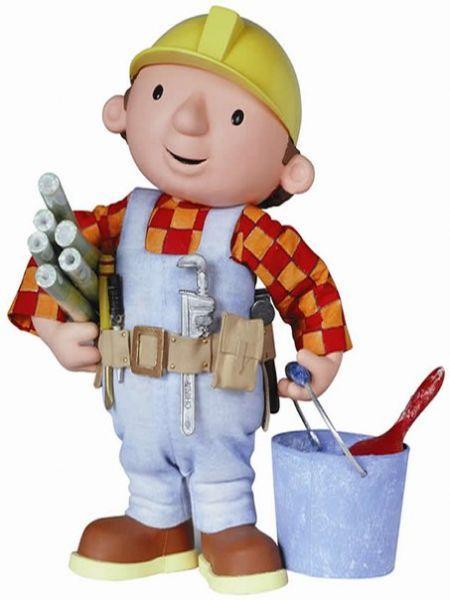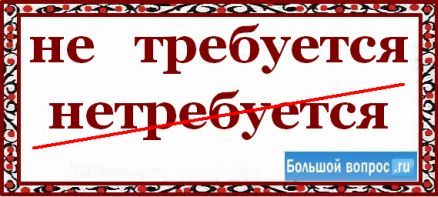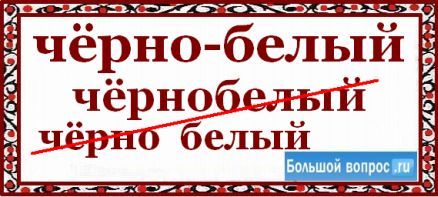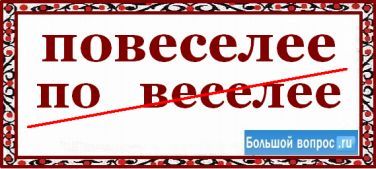Как правильно пишется словосочетание «коренной зуб»
- Как правильно пишется слово «коренной»
- Как правильно пишется слово «зуб»
Делаем Карту слов лучше вместе
Привет! Меня зовут Лампобот, я компьютерная программа, которая помогает делать
Карту слов. Я отлично
умею считать, но пока плохо понимаю, как устроен ваш мир. Помоги мне разобраться!
Спасибо! Я стал чуточку лучше понимать мир эмоций.
Вопрос: размерить — это что-то нейтральное, положительное или отрицательное?
Ассоциации к словосочетанию «коренной зуб»
Синонимы к словосочетанию «коренной зуб»
Предложения со словосочетанием «коренной зуб»
- Трущая поверхность коренных зубов покрыта бугорками, гребнями или плоскими складками, края которых также способны самозатачиваться при стирании благодаря различной толщине эмали на разных участках.
- – Ты полностью здоров, и скоро у тебя появятся коренные зубы.
- В стенках канала имеются отверстия, через которые проходят сосуды и нервы к коренным зубам.
- (все предложения)
Цитаты из русской классики со словосочетанием «коренной зуб»
- Множество невест успело выйти замуж; в Миргороде пробили новую улицу; у судьи выпал один коренной зуб и два боковых; у Ивана Ивановича бегало по двору больше ребятишек, нежели прежде: откуда они взялись, бог один знает!
- И мешал грузчик в красной рубахе; он жил в памяти неприятным пятном и, как бы сопровождая Самгина, вдруг воплощался то в одного из матросов парохода, то в приказчика на пристани пыльной Самары, в пассажира третьего класса, который, сидя на корме, ел орехи, необыкновенным приемом раскалывая их: положит орех на коренные зубы, ударит ладонью снизу по челюсти, и — орех расколот.
- Подле него, возле ступенек крыльца и на самых ступеньках, располагалось несколько пьяных мужиков, которые сидели вкривь и вкось, иной даже лежал, но все держались за руки или обнимались; они не обращали внимания на то, что через них шагали, наступали им на ноги или же попросту валились на них: дружеские объятия встречали того, кто спотыкался и падал; они горланили что было моченьки, во сколько хватало духу какую-то раздирательную, нескладную песню и так страшно раскрывали рты, что видны были не только коренные зубы, но даже нёбо и маленький язычок, болтавшийся в горле.
- (все
цитаты из русской классики)
Значение словосочетания «коренной зуб»
-
1. анат. стомат. шестые, седьмые и восьмые зубы постоянного ряда или четвёртые и пятые зубы молочного ряда с левой и правой стороны челюсти у человека, служащие в основном для первичной механической обработки пищи (Викисловарь)
Все значения словосочетания КОРЕННОЙ ЗУБ
Афоризмы русских писателей со словом «коренной»
- Язык наш выразителен не только для высокого красноречия, для громкой, живописной поэзии, но и для нежной простоты, для звуков сердца и чувствительности. Он богатее гармониею, нежели французский; способнее для излития души в тонах; представляет более аналогичных слов, то есть сообразных и с выражаемым действием: выгода, которую имеют одни коренные языки.
- Древняя русская литература — наша, родная. Это наши корни, наши истоки. Как важно бывает обратиться к своим основам! Это своего рода тяга к «духовной оседлости», к обретению устойчивости, к укреплению чувства родного, коренного, которое, естественно, усиливается по мере того, как растет наше культурное самосознание.
- Любовь и Голод — два родных брата, две коренных основы всего живущего.
Все, что живет — движется, чтобы питаться; и питается, чтобы воспроизводить.
Любовь и Голод — цель их одна: нужно, чтобы жизнь не прекращалась, собственная и чужая — все та же, всеобщая жизнь. - (все афоризмы русских писателей)
Отправить комментарий
Дополнительно
Коренные зубы
- Коренные зубы
-
- Коренные зубы
- КОРЕННО́Й 1, -а́я, -о́е.
Толковый словарь Ожегова.
1949-1992.
.
Смотреть что такое «Коренные зубы» в других словарях:
-
КОРЕННЫЕ ЗУБЫ — (denies molares), высокоспециализированные зубы, для к рых характерна складчатая или бугорчатая поверхность, служат для перетирания пищи. Расположены кзади от клыков. К. з. разделяют на большие, или истинные (моляры), и малые, или ложнокоренные… … Биологический энциклопедический словарь
-
Коренные зубы — задние зубы млекопитающих, отличающиеся сложностью строения и часто не подвергающиеся смене (см. Зубы). Они делятся на переднекоренные, или ложные (praemolares), и заднекоренные (molares), или настоящие. Исходной формой для бугорчатого коренного… … Энциклопедический словарь Ф.А. Брокгауза и И.А. Ефрона
-
Коренные зубы — малые, или ложнокоренные (премоляры), обычно однокорневые, и большие, или истинные, коренные (моляры), многокорневые зубы у большинства млекопитающих и человека. Жевательная поверхность К. з. обычно бугорчатая или складчатая (копытные,… … Большая советская энциклопедия
-
коренные зубы — Пищеварительный аппарат формируется совокупностью органов, обеспечивающих трансформацию питательных веществ, приносимых с пищей, клетками организма. Он состоит из ряда полых органов, совокупность которых формирует пищеварительный тракт и полных… … Универсальный дополнительный практический толковый словарь И. Мостицкого
-
коренные зубы — Задние пять зубов с каждой стороны обеих челюстей … Словарь многих выражений
-
ЗУБЫ — ЗУБЫ. Зубы позвоночных по своему строению и развитию совершенно сходны с плакоид ными чешуями, покрывающими всю кожу акуловых рыб. Поскольку вся ротовая полость, а частью и полость глотки, выстлана эктодермальным эпителием, типичная пла коидная… … Большая медицинская энциклопедия
-
ЗУБЫ — ЗУБЫ. Состояние зубов имеет большое значение для здоровья человека. При недостаточном уходе за зубами человек начинает их постепенно терять. Если зубы отсутствуют или они больны, то пища прожёвывается плохо. Неразмельчённая и необработанная пища … Краткая энциклопедия домашнего хозяйства
-
Зубы (denies) верхней и нижней челюстей у взрослого человека. Правая сторона — Вид справа. Наружная пластинка костного вещества верхней и нижней челюстей удалена. верхние большие коренные зубы (моляры); верхние малые коренные зубы (премоляры); верхний клык; верхний латеральный резец; верхний медиальный резец; нижний… … Атлас анатомии человека
-
Зубы — I Зубы (dentes) Служат для откусывания и пережевывания пищи, а также участвуют в звукообразовании. У человека различают две генерации З. так называемые молочные (выпадающие) и постоянные. Закладка молочных З. начинается на 6 7 й неделе… … Медицинская энциклопедия
-
Зубы — Рис. 1. Схематическое изображение зубных рядов взрослого человека. Рис. 1. Схематическое изображение зубных рядов взрослого человека: а — резцы; б — клыки; в — малые коренные зубы; г — большие коренные зубы. Зубы. Развитие… … Первая медицинская помощь — популярная энциклопедия
| Molar | |
|---|---|

A lower wisdom tooth after extraction. |
|
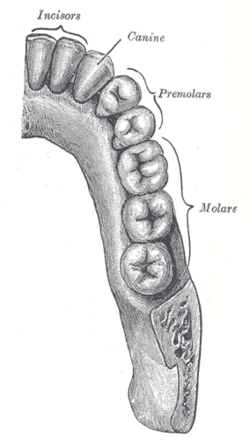
Permanent teeth of right half of lower dental arch, seen from above: In this diagram, a healthy wisdom tooth (third, rearmost molar) is included |
|
| Details | |
| Artery | Posterior superior alveolar artery |
| Identifiers | |
| Latin | dentes molares |
| MeSH | D008963 |
| TA98 | A05.1.03.007 |
| TA2 | 910 |
| FMA | 55638 |
| Anatomical terminology
[edit on Wikidata] |
Image showing molar teeth and their arrangement in the mouth of an adult human being
The molars or molar teeth are large, flat teeth at the back of the mouth. They are more developed in mammals. They are used primarily to grind food during chewing. The name molar derives from Latin, molaris dens, meaning «millstone tooth», from mola, millstone and dens, tooth. Molars show a great deal of diversity in size and shape across mammal groups. The third molar of humans is sometimes vestigial.
Human anatomy[edit]
In humans, the molar teeth have either four or five cusps. Adult humans have 12 molars, in four groups of three at the back of the mouth. The third, rearmost molar in each group is called a wisdom tooth. It is the last tooth to appear, breaking through the front of the gum at about the age of 20, although this varies from individual to individual. Race can also affect the age at which this occurs, with statistical variations between groups.[1] In some cases, it may not even erupt at all.
The human mouth contains upper (maxillary) and lower (mandibular) molars. They are: maxillary first molar, maxillary second molar, maxillary third molar, mandibular first molar, mandibular second molar, and mandibular third molar.
Mammal evolution[edit]
In mammals, the crown of the molars and premolars is folded into a wide range of complex shapes. The basic elements of the crown are the more or less conical projections called cusps and the valleys that separate them. The cusps contain both dentine and enamel, whereas minor projections on the crown, called crenulations, are the result of different enamel thickness. Cusps are occasionally joined to form ridges and expanded to form crests. Cingula are often incomplete ridges that pass around the base of the crown.[2]
Mammalian, multicusped cheek teeth probably evolved from single-cusped teeth in synapsids, although the diversity of therapsid molar patterns and the complexity in the molars of the earliest mammals make determining how this happened impossible. According to the widely accepted «differentiation theory», additional cusps have arisen by budding or outgrowth from the crown, while the rivalling «concrescence theory» instead proposes that complex teeth evolved by the clustering of originally separate conical teeth. Therian mammals (placentals and marsupials) are generally agreed to have evolved from an ancestor with tribosphenic cheek teeth, with three main cusps arranged in a triangle.[2]
Morphology[edit]
Generalized cusp of a mammalian molar: ant, anterior; pos, posterior; ci, lingual cingulum; pa, paraconid; pr, protoconid; me, metaconid; hy, hypoconid; hl, hypoconulid; ec, entocristid; tb, talonid basin
Each major cusp on an upper molar is called a cone and is identified by a prefix dependent on its relative location on the tooth: proto-, para-, meta-, hypo-, and ento-. Suffixes are added to these names: -id is added to cusps on a lower molar (e.g., protoconid); -ule to a minor cusp (e.g., protoconulid). A shelf-like ridge on the lower part of the crown (on an upper molar) is called a cingulum; the same feature on the lower molar a cingulid, and a minor cusp on these, for example, a cingular cuspule or conulid.[3]
Tribosphenic[edit]
Generalized tribosphenic molar: The protocone is on the lingual (tongue) side, while the anterior paracone and posterior metacone are on the buccal (cheek) side of the jaw).
The design that is considered one of the most important characteristics of mammals is a three-cusped shape called a tribosphenic molar. This molar design has two important features: the trigonid, or shearing end, and the talonid, or crushing heel. In modern tribosphenic molars, the trigonid is towards the front of the jaw and the talonid is towards the rear.
The tribosphenic tooth is found in insectivores and young platypuses (adults have no teeth). Upper molars look like three-pointed mountain ranges; lowers look like two peaks and a third off to the side.
The tribosphenic design appears primitively in all groups of mammals. Some paleontologists believe that it developed independently in monotremes (or australosphenidans), rather than being inherited from an ancestor that they share with marsupials and placentals (or boreosphenidans); but this idea has critics and the debate is still going on.[4] For example, the dentition of the Early Cretaceous monotreme Steropodon is similar to those of Peramus and dryolestoids, which suggests that monotremes are related to some pre-tribosphenic therian mammals,[5] but, on the other hand, the status of neither of these two groups is well-established.
Some Jurassic mammals, such as Shuotherium and Pseudotribos, have «reversed tribosphenic» molars, in which the talonid is towards the front. This variant is regarded as an example of convergent evolution.[6]
From the primitive tribosphenic tooth, molars have diversified into several unique morphologies. In many groups, a fourth cusp, the hypocone (hypoconid), subsequently evolved (see below).
Quadrate[edit]
Quadrate (also called quadritubercular or euthemorphic) molars have an additional fourth cusp on the lingual (tongue) side called the hypocone, located posterior to the protocone. Quadrate molars appeared early in mammal evolution and are present in many species, including hedgehogs, raccoons, and many primates, including humans.[7]
There may be a fifth cusp.
In many mammals, additional smaller cusps called conules appear between the larger cusps. They are named after their locations, e.g. a paraconule is located between a paracone and a metacone, a hypoconulid is located between a hypoconid and an entoconid.[7]
Bunodont[edit]
In bunodont molars, the cusps are low and rounded hills rather than sharp peaks. They are most common among omnivores such as pigs, bears, and humans.[7] Bunodont molars are effective crushing devices and often basically quadrate in shape.[8]
Hypsodont[edit]
Hypsodont dentition is characterized by high-crowned teeth and enamel that extends far past the gum line, which provides extra material for wear and tear.[9] Some examples of animals with hypsodont dentition are cattle and horses, all animals that feed on gritty, fibrous material. Hypsodont molars can continue to grow throughout life, for example in some species of Arvicolinae (herbivorous rodents).[7]
Hypsodont molars lack both a crown and a neck. The occlusal surface is rough and mostly flat, adapted for crushing and grinding plant material. The body is covered with cementum both above and below the gingival line, below which is a layer of enamel covering the entire length of the body. The cementum and the enamel invaginate into the thick layer of dentin.[10]
Brachydont[edit]
The opposite condition to hypsodont is called brachydont or brachyodont (from brachys ‘short’). It is a type of dentition characterized by low-crowned teeth. Human teeth are brachydont.[7]
A brachydont tooth has a crown above the gingival line and a neck just below it, and at least one root. A cap of enamel covers the crown and extends down to the neck. Cementum is only found below the gingival line. The occlusal surfaces tend to be pointed, well-suited for holding prey and tearing and shredding.[10]
Zalambdodont[edit]
Zalambdodont molars have three cusps, one larger on the lingual side and two smaller on the labial side, joined by two crests that form a V- or λ-shape. The larger inner cusp might be homologous with the paracone in a tribosphenic molar, but can also be fused with the metacone. The protocone is typically missing. The two smaller labial cusps are located on an expanded shelf called the stylar shelf. Zalambdodont molars are found in, for example, golden moles and solenodons.[7]
Dilambdodont[edit]
Like zalambdodont molars, dilambdodont molars have a distinct ectoloph, but are shaped like two lambdas or a W. On the lingual side, at the bottom of the W, are the metacone and paracone, and the stylar shelf is on the labial side. A protocone is present lingual to the ectoloph. Dilambdodont molars are present in shrews, moles, and some insectivorous bats.[7]
Lophodont[edit]
Rodent molars (left) compared to an elephant molar, 2019
Lophodont teeth are easily identified by the differentiating patterns of ridges or lophs of enamel interconnecting the cusps on the crowns. Present in most herbivores, these patterns of lophs can be a simple, ring-like edge, as in mole rats, or a complex arrangement of series of ridges and cross-ridges, as those in odd-toed ungulates, such as equids.[8]
Lophodont molars have hard and elongated enamel ridges called lophs oriented either along or perpendicular to the dental row. Lophodont molars are common in herbivores that grind their food thoroughly. Examples include tapirs, manatees, and many rodents.[7]
When two lophs form transverse, often ring-shaped, ridges on a tooth, the arrangement is called bilophodont. This pattern is common in primates, but can also be found in lagomorphs (hares, rabbits, and pikas) and some rodents.[7][8]
Extreme forms of lophodonty in elephants and some rodents (such as Otomys) is known as loxodonty.[7] The African elephant belongs to a genus called Loxodonta because of this feature.
Selenodont[edit]
In selenodont molars (so-named after moon goddess Selene), the major cusp is elongated into crescent-shaped ridge. Examples include most even-toed ungulates, such as cattle and deer.[7][8]
Secodont[edit]
Carnassials of a Eurasian wolf
Many carnivorous mammals have enlarged and blade-like teeth especially adapted for slicing and chopping called carnassials. A general term for such blade-like teeth is secodont or plagiaulacoid.[7]
See also[edit]
- Dental formula
- Polyphyodont
Notes[edit]
- ^ Rozkovcová, E; Marková, M; Dolejsí, J (1999). «Studies on agenesis of third molars amongst populations of different origin». Sbornik Lekarsky. 100 (2): 71–84. PMID 11220165.
- ^ a b Zhao, Weiss & Stock 2000, Acquisition of multi-cusped cheek teeth in mammals, p. 154
- ^ Myers et al. 2013b
- ^ Stokstad 2001
- ^ Luo, Cifelli & Kielan-Jaworowska 2001
- ^ Luo, Ji & Yuan 2007
- ^ a b c d e f g h i j k l Myers et al. 2013a
- ^ a b c d Lawlor 1979, pp. 13–4
- ^ Flynn, Wyss & Charrier 2007
- ^ a b Kwan, Paul W.L. (2007). «Digestive system I» (PDF). Tufts University. Archived from the original (PDF) on 13 September 2012. Retrieved 18 May 2013.
References[edit]
- Flynn, John J.; Wyss, André R.; Charrier, Reynaldo (May 2007). «South America’s Missing Mammals». Scientific American. 296 (5): 68–75. Bibcode:2007SciAm.296e..68F. doi:10.1038/scientificamerican0507-68. OCLC 17500416. PMID 17500416. Retrieved 11 May 2013.
- Lawlor, T.E. (1979). «The Mammalian Skeleton» (PDF). Handbook to the Orders and Families of Living Mammals. Mad River Press. ISBN 978-0-916422-16-5. OCLC 5763193. Archived from the original (PDF) on 1 July 2010. Retrieved 12 May 2013.
- Luo, Zhe-Xi; Cifelli, Richard L.; Kielan-Jaworowska, Zofia (4 January 2001). «Dual origin of tribosphenic mammals». Nature. 409 (6816): 53–7. Bibcode:2001Natur.409…53L. doi:10.1038/35051023. PMID 11343108. S2CID 4342585.
- Luo, Z.-X.; Ji, Q.; Yuan, C.-X. (November 2007). «Convergent dental adaptations in pseudo-tribosphenic and tribosphenic mammals». Nature. 450 (7166): 93–97. Bibcode:2007Natur.450…93L. doi:10.1038/nature06221. PMID 17972884. S2CID 609206.
- Myers, P.; Espinosa, R.; Parr, C. S.; Jones, T.; Hammond, G. S.; Dewey, T. A. (2013a). «The Basic Structure of Cheek Teeth». Animal Diversity Web, University of Michigan. Retrieved 12 May 2013.
- Myers, P.; Espinosa, R.; Parr, C. S.; Jones, T.; Hammond, G. S.; Dewey, T. A. (2013b). «The Diversity of Cheek Teeth». Animal Diversity Web, University of Michigan. Archived from the original on 5 April 2013. Retrieved 12 May 2013.
- Stokstad, E. (January 2001). «Tooth Theory Revises History of Mammals». Science. 291 (5501): 26. doi:10.1126/science.10.1126/science.291.5501.26. PMID 11191993. S2CID 6297739.
- Zhao, Z.; Weiss, K. M.; Stock, D. W. (2000). «Development and evolution of dentition patterns and their genetic basis». In Teaford, Mark F; Smith, Moya Meredith; Ferguson, Mark WJ (eds.). Development, Function and Evolution of Teeth. Cambridge University Press. pp. 152–72. ISBN 978-0-511-06568-2.
External links[edit]
- Overview of molar morphology and terminology- Paleos.com
| Molar | |
|---|---|

A lower wisdom tooth after extraction. |
|

Permanent teeth of right half of lower dental arch, seen from above: In this diagram, a healthy wisdom tooth (third, rearmost molar) is included |
|
| Details | |
| Artery | Posterior superior alveolar artery |
| Identifiers | |
| Latin | dentes molares |
| MeSH | D008963 |
| TA98 | A05.1.03.007 |
| TA2 | 910 |
| FMA | 55638 |
| Anatomical terminology
[edit on Wikidata] |
Image showing molar teeth and their arrangement in the mouth of an adult human being
The molars or molar teeth are large, flat teeth at the back of the mouth. They are more developed in mammals. They are used primarily to grind food during chewing. The name molar derives from Latin, molaris dens, meaning «millstone tooth», from mola, millstone and dens, tooth. Molars show a great deal of diversity in size and shape across mammal groups. The third molar of humans is sometimes vestigial.
Human anatomy[edit]
In humans, the molar teeth have either four or five cusps. Adult humans have 12 molars, in four groups of three at the back of the mouth. The third, rearmost molar in each group is called a wisdom tooth. It is the last tooth to appear, breaking through the front of the gum at about the age of 20, although this varies from individual to individual. Race can also affect the age at which this occurs, with statistical variations between groups.[1] In some cases, it may not even erupt at all.
The human mouth contains upper (maxillary) and lower (mandibular) molars. They are: maxillary first molar, maxillary second molar, maxillary third molar, mandibular first molar, mandibular second molar, and mandibular third molar.
Mammal evolution[edit]
In mammals, the crown of the molars and premolars is folded into a wide range of complex shapes. The basic elements of the crown are the more or less conical projections called cusps and the valleys that separate them. The cusps contain both dentine and enamel, whereas minor projections on the crown, called crenulations, are the result of different enamel thickness. Cusps are occasionally joined to form ridges and expanded to form crests. Cingula are often incomplete ridges that pass around the base of the crown.[2]
Mammalian, multicusped cheek teeth probably evolved from single-cusped teeth in synapsids, although the diversity of therapsid molar patterns and the complexity in the molars of the earliest mammals make determining how this happened impossible. According to the widely accepted «differentiation theory», additional cusps have arisen by budding or outgrowth from the crown, while the rivalling «concrescence theory» instead proposes that complex teeth evolved by the clustering of originally separate conical teeth. Therian mammals (placentals and marsupials) are generally agreed to have evolved from an ancestor with tribosphenic cheek teeth, with three main cusps arranged in a triangle.[2]
Morphology[edit]
Generalized cusp of a mammalian molar: ant, anterior; pos, posterior; ci, lingual cingulum; pa, paraconid; pr, protoconid; me, metaconid; hy, hypoconid; hl, hypoconulid; ec, entocristid; tb, talonid basin
Each major cusp on an upper molar is called a cone and is identified by a prefix dependent on its relative location on the tooth: proto-, para-, meta-, hypo-, and ento-. Suffixes are added to these names: -id is added to cusps on a lower molar (e.g., protoconid); -ule to a minor cusp (e.g., protoconulid). A shelf-like ridge on the lower part of the crown (on an upper molar) is called a cingulum; the same feature on the lower molar a cingulid, and a minor cusp on these, for example, a cingular cuspule or conulid.[3]
Tribosphenic[edit]
Generalized tribosphenic molar: The protocone is on the lingual (tongue) side, while the anterior paracone and posterior metacone are on the buccal (cheek) side of the jaw).
The design that is considered one of the most important characteristics of mammals is a three-cusped shape called a tribosphenic molar. This molar design has two important features: the trigonid, or shearing end, and the talonid, or crushing heel. In modern tribosphenic molars, the trigonid is towards the front of the jaw and the talonid is towards the rear.
The tribosphenic tooth is found in insectivores and young platypuses (adults have no teeth). Upper molars look like three-pointed mountain ranges; lowers look like two peaks and a third off to the side.
The tribosphenic design appears primitively in all groups of mammals. Some paleontologists believe that it developed independently in monotremes (or australosphenidans), rather than being inherited from an ancestor that they share with marsupials and placentals (or boreosphenidans); but this idea has critics and the debate is still going on.[4] For example, the dentition of the Early Cretaceous monotreme Steropodon is similar to those of Peramus and dryolestoids, which suggests that monotremes are related to some pre-tribosphenic therian mammals,[5] but, on the other hand, the status of neither of these two groups is well-established.
Some Jurassic mammals, such as Shuotherium and Pseudotribos, have «reversed tribosphenic» molars, in which the talonid is towards the front. This variant is regarded as an example of convergent evolution.[6]
From the primitive tribosphenic tooth, molars have diversified into several unique morphologies. In many groups, a fourth cusp, the hypocone (hypoconid), subsequently evolved (see below).
Quadrate[edit]
Quadrate (also called quadritubercular or euthemorphic) molars have an additional fourth cusp on the lingual (tongue) side called the hypocone, located posterior to the protocone. Quadrate molars appeared early in mammal evolution and are present in many species, including hedgehogs, raccoons, and many primates, including humans.[7]
There may be a fifth cusp.
In many mammals, additional smaller cusps called conules appear between the larger cusps. They are named after their locations, e.g. a paraconule is located between a paracone and a metacone, a hypoconulid is located between a hypoconid and an entoconid.[7]
Bunodont[edit]
In bunodont molars, the cusps are low and rounded hills rather than sharp peaks. They are most common among omnivores such as pigs, bears, and humans.[7] Bunodont molars are effective crushing devices and often basically quadrate in shape.[8]
Hypsodont[edit]
Hypsodont dentition is characterized by high-crowned teeth and enamel that extends far past the gum line, which provides extra material for wear and tear.[9] Some examples of animals with hypsodont dentition are cattle and horses, all animals that feed on gritty, fibrous material. Hypsodont molars can continue to grow throughout life, for example in some species of Arvicolinae (herbivorous rodents).[7]
Hypsodont molars lack both a crown and a neck. The occlusal surface is rough and mostly flat, adapted for crushing and grinding plant material. The body is covered with cementum both above and below the gingival line, below which is a layer of enamel covering the entire length of the body. The cementum and the enamel invaginate into the thick layer of dentin.[10]
Brachydont[edit]
The opposite condition to hypsodont is called brachydont or brachyodont (from brachys ‘short’). It is a type of dentition characterized by low-crowned teeth. Human teeth are brachydont.[7]
A brachydont tooth has a crown above the gingival line and a neck just below it, and at least one root. A cap of enamel covers the crown and extends down to the neck. Cementum is only found below the gingival line. The occlusal surfaces tend to be pointed, well-suited for holding prey and tearing and shredding.[10]
Zalambdodont[edit]
Zalambdodont molars have three cusps, one larger on the lingual side and two smaller on the labial side, joined by two crests that form a V- or λ-shape. The larger inner cusp might be homologous with the paracone in a tribosphenic molar, but can also be fused with the metacone. The protocone is typically missing. The two smaller labial cusps are located on an expanded shelf called the stylar shelf. Zalambdodont molars are found in, for example, golden moles and solenodons.[7]
Dilambdodont[edit]
Like zalambdodont molars, dilambdodont molars have a distinct ectoloph, but are shaped like two lambdas or a W. On the lingual side, at the bottom of the W, are the metacone and paracone, and the stylar shelf is on the labial side. A protocone is present lingual to the ectoloph. Dilambdodont molars are present in shrews, moles, and some insectivorous bats.[7]
Lophodont[edit]
Rodent molars (left) compared to an elephant molar, 2019
Lophodont teeth are easily identified by the differentiating patterns of ridges or lophs of enamel interconnecting the cusps on the crowns. Present in most herbivores, these patterns of lophs can be a simple, ring-like edge, as in mole rats, or a complex arrangement of series of ridges and cross-ridges, as those in odd-toed ungulates, such as equids.[8]
Lophodont molars have hard and elongated enamel ridges called lophs oriented either along or perpendicular to the dental row. Lophodont molars are common in herbivores that grind their food thoroughly. Examples include tapirs, manatees, and many rodents.[7]
When two lophs form transverse, often ring-shaped, ridges on a tooth, the arrangement is called bilophodont. This pattern is common in primates, but can also be found in lagomorphs (hares, rabbits, and pikas) and some rodents.[7][8]
Extreme forms of lophodonty in elephants and some rodents (such as Otomys) is known as loxodonty.[7] The African elephant belongs to a genus called Loxodonta because of this feature.
Selenodont[edit]
In selenodont molars (so-named after moon goddess Selene), the major cusp is elongated into crescent-shaped ridge. Examples include most even-toed ungulates, such as cattle and deer.[7][8]
Secodont[edit]
Carnassials of a Eurasian wolf
Many carnivorous mammals have enlarged and blade-like teeth especially adapted for slicing and chopping called carnassials. A general term for such blade-like teeth is secodont or plagiaulacoid.[7]
See also[edit]
- Dental formula
- Polyphyodont
Notes[edit]
- ^ Rozkovcová, E; Marková, M; Dolejsí, J (1999). «Studies on agenesis of third molars amongst populations of different origin». Sbornik Lekarsky. 100 (2): 71–84. PMID 11220165.
- ^ a b Zhao, Weiss & Stock 2000, Acquisition of multi-cusped cheek teeth in mammals, p. 154
- ^ Myers et al. 2013b
- ^ Stokstad 2001
- ^ Luo, Cifelli & Kielan-Jaworowska 2001
- ^ Luo, Ji & Yuan 2007
- ^ a b c d e f g h i j k l Myers et al. 2013a
- ^ a b c d Lawlor 1979, pp. 13–4
- ^ Flynn, Wyss & Charrier 2007
- ^ a b Kwan, Paul W.L. (2007). «Digestive system I» (PDF). Tufts University. Archived from the original (PDF) on 13 September 2012. Retrieved 18 May 2013.
References[edit]
- Flynn, John J.; Wyss, André R.; Charrier, Reynaldo (May 2007). «South America’s Missing Mammals». Scientific American. 296 (5): 68–75. Bibcode:2007SciAm.296e..68F. doi:10.1038/scientificamerican0507-68. OCLC 17500416. PMID 17500416. Retrieved 11 May 2013.
- Lawlor, T.E. (1979). «The Mammalian Skeleton» (PDF). Handbook to the Orders and Families of Living Mammals. Mad River Press. ISBN 978-0-916422-16-5. OCLC 5763193. Archived from the original (PDF) on 1 July 2010. Retrieved 12 May 2013.
- Luo, Zhe-Xi; Cifelli, Richard L.; Kielan-Jaworowska, Zofia (4 January 2001). «Dual origin of tribosphenic mammals». Nature. 409 (6816): 53–7. Bibcode:2001Natur.409…53L. doi:10.1038/35051023. PMID 11343108. S2CID 4342585.
- Luo, Z.-X.; Ji, Q.; Yuan, C.-X. (November 2007). «Convergent dental adaptations in pseudo-tribosphenic and tribosphenic mammals». Nature. 450 (7166): 93–97. Bibcode:2007Natur.450…93L. doi:10.1038/nature06221. PMID 17972884. S2CID 609206.
- Myers, P.; Espinosa, R.; Parr, C. S.; Jones, T.; Hammond, G. S.; Dewey, T. A. (2013a). «The Basic Structure of Cheek Teeth». Animal Diversity Web, University of Michigan. Retrieved 12 May 2013.
- Myers, P.; Espinosa, R.; Parr, C. S.; Jones, T.; Hammond, G. S.; Dewey, T. A. (2013b). «The Diversity of Cheek Teeth». Animal Diversity Web, University of Michigan. Archived from the original on 5 April 2013. Retrieved 12 May 2013.
- Stokstad, E. (January 2001). «Tooth Theory Revises History of Mammals». Science. 291 (5501): 26. doi:10.1126/science.10.1126/science.291.5501.26. PMID 11191993. S2CID 6297739.
- Zhao, Z.; Weiss, K. M.; Stock, D. W. (2000). «Development and evolution of dentition patterns and their genetic basis». In Teaford, Mark F; Smith, Moya Meredith; Ferguson, Mark WJ (eds.). Development, Function and Evolution of Teeth. Cambridge University Press. pp. 152–72. ISBN 978-0-511-06568-2.
External links[edit]
- Overview of molar morphology and terminology- Paleos.com
1
Как пишется: «маляр» или «моляр»?
Как правильно пишется слово: «маляр» или «моляр»?
Как правильно писать слово: «маляр» или «моляр»?
7 ответов:
11
0
Варианты оба правильные, понятия разные.
Маляр окрашивает поверхности и предметы красками. Его инструменты — малярные кисти.
Моляр в английском дословно значит «коренной зуб». Зубная дуга включает не больше 16 зубов, 8 слева и 8 справа. От центра вначале располагаются два резца, клык, потом малые коренные (их называют премолярами), по нумерации они считаются 4 и 5. Затем настоящие моляры — самый большой 1 моляр (шестой от центральной линии), 2 (седьмой) и непостоянный 3 моляр (зуб мудрости).
Взаимоотношение зубов — шестёрок очень важно для стоматологов и протезистов, называют его ключ окклюзии. Об этом здесь.
6
0
Здравствуйте!
Существительное маляр верно пишется чрез букву «А». Сие слово проверить невозможно, ибо оно словарное. Посему, учителя говорят выписывать его с иными словами в тетрадь-словарик и запоминать, то есть, выучить написание слова «маляр» наизусть.
<hr />
Можно рассказать деткам, что данное слово заимствованное из немецкого чрез польский, а на польском оно пишется так:
malarz. Мы видим в слове букву «А». И это тоже может помочь в запоминании правописания. Заимствование слова было ещё в петровские времена!
<hr />
Весьма многие лингвисты всё-таки находят связь с основой общеславянского языка, от коей и произошёл глагол «мАлевать» красить.
Нынче маляром называют того, кто занимается тем, что окрашивает различные здания и помещения.
5
0
А правильно пишется и «мАляр», и «мОляр» — в зависимости от того, что это слово обозначает.
Если речь идёт о специальности строительной, о рабочем, занимающимся окраской зданий, предметов интерьера (и так далее), то употребляется слово МАЛЯР.
Но, оказывается, каждый из нас знаком со словом «моляр», мало того, моляры есть у каждого человека, ведь в стоматологии существует термин МОЛЯР — так называют коренные зубы.
Так что в зависимости от контекста выбираем соответствующую букву в слове — О (моляр) или А (маляр).
Правописание обоих слов следует запомнить, так как проверочных слов нет и выбор букв ОА зависит от значения слова.
3
0
Добрый день.
Данное слово можно писать по-разному, так как оба слова существуют (моляр и маляр), но имеют разное значение.
Более привычно нам слово «Маляр» — это человек, который красит стенки, дома и т.п.
Слово «маляр» — это уже понятие профессиональное и относится к области стоматологии, это коренные зубы.
1
0
Никогда не видела, чтобы кто-то написал слово «маляр» через О. Просто на интуитивном уровне напрашивается буква А.
Слово МАЛЯР имеет иностранное происхождение и, прежде чем попало в русский язык, прошло через несколько языков, меняя при этом свое первоначальное произношение и грамматику. Так например немецкое «malen» происходит от прагерманской формы «*mal», что значит темный. Таким образом написание слова маляр в русском языке нужно просто запомнить.
0
0
Правильно писать маляр. Проверочное слово сходу не могу придумать, но, возможно, это словарное слово
0
0
маляр-это правильно-оно обособленно и без проверочного слова
Читайте также
«Не требуется» — это даже и не слово, а два слова. Первое — частица, а второе — глагол.
Думается, что такое предположение не было голословным, поскольку второе слово («требуется») отвечает на вопрос «что делает?» (или «что делается?», если создавать вопрос с обычной формальностью, не вдаваясь в смысл). Да и обладает другими категориальными признаками глагола.
А первое слово («не») не может быть признано приставкой, потому что если в языке есть слово «требуется», но не может быть слова «нетребуется». Это понятно из правила, обуславливающего соответствующую раздельность глаголов с «НЕ».
_
Итак, глагол «требоваться относится к совокупности тех, которые не сливаются с «НЕ». Писать «нетребуется» нельзя.
Ещё одно простейшее доказательство того — возможность принудительного разделения «НЕ» и глагола вставленным словом. Например: «не очень требуется», «не слишком требуется», «не каждый год требуется» и так далее.
Других доказательств не потребуется.
Предложение.
- «А что, разве не требуется даже подтверждения своей почты?».
«Чёрно-белый» — это сложное имя прилагательное, являющееся высокочастотным представителем так называемой колоративной лексики (выражение цвета) с возможной коннотацией «блеклый во всех отношениях» и с модальностью «отрицание цвета».
Как известно, коннотативные значения никогда не берут верх при объяснении орфографии слов, поэтому в данном случае мы должны воспринимать это прилагательное только как цветообозначение. Такие слова пишется с дефисом. К тому же части слова «чёрно-белый» совершенно семантически равноправны.
Писать «чёрно белый» (раздельно) или «чёрнобелый» (слитно) нельзя.
Например (предложения).
- «Любая чёрно-белая фотография носит в себе оттенки старины».
- «В третьем зале музея стояли чёрно-белые телевизоры».
- «Ваня Мельничаненко почему-то воспринимал мир только в чёрно-белых тонах».
1) Утверждение: Это непреступный (находящийся в рамках закона) случай простой женской хитрости.
2) Отрицание:
Случай этот — не преступный, здесь скорее нарушение общественной морали.
Случай этот отнюдь не преступный.
Планы у подростков были не преступные, а вполне безобидные.
Надо сказать, что обе формы, слитная и раздельная, используются крайне редко, в отличие от омофона «неприступный» (с большой частотностью). Особенно это касается слитного написания, когда поисковик указывает на ошибку и предлагает найти слово «неприступный».
Сочетание «со мной» (ударение на «О«, которая после «Н«) — это ни что другое, как предлог «С» с местоимением «Я«. Но мы эмпирически понимаем, что говорить «Пойдём с я» нельзя.
- «Со» — вариант «с», иногда используемый, в частности, перед [м] плюс согласная. Например: «со многими». Это из разряда «подо», «предо», «передо», «ко», «во», «надо», «обо» и так далее.
- «Мной» («мною») — это указанное выше «Я» в творительном падеже. «С кем? — со мной (со мною)». Личное местоимение.
Предлоги нельзя в таких случаях подсоединять к личным местоимениям. Подобные примеры: «с тобой (с тобою)», «с ней (с нею»)», «с ним».
Писать «сомной» нельзя. Нужен пробел.
Предложения:
- «Со мной всё в полном порядке, Трофим, а с тобой ничего не случилось ли?».
- «Будь со мной, Игнатий, не когда тебе это необходимо, а всегда».
Слово «повеселее» находится в составе систематизированного языка, в числе подобных единиц («получше», «понастойчивее», «похуже» и так далее).
Элемент «по-«, который мы при написании таких слов порой не знаем, к приставкам его отнести или к предлогам, является всё-таки приставкой.
Оттолкнёмся от имени прилагательного «весёлый» и от наречия «весело». И у первого, и у второго слов имеются формы (одинаковые!) сравнительной степени, которые образуются так:
- «Весёлый — веселее — повеселее».
- «Весело — веселее — повеселее».
К простейшей классической форме прибавляется наша приставка, преобразуя её в разговорную. Этот приём — системный. Пишется приставка слитно. Писать «по веселее» (или «по веселей») нельзя.
Например.
- «Повеселее, повеселее, Родион, не засыпай!».





